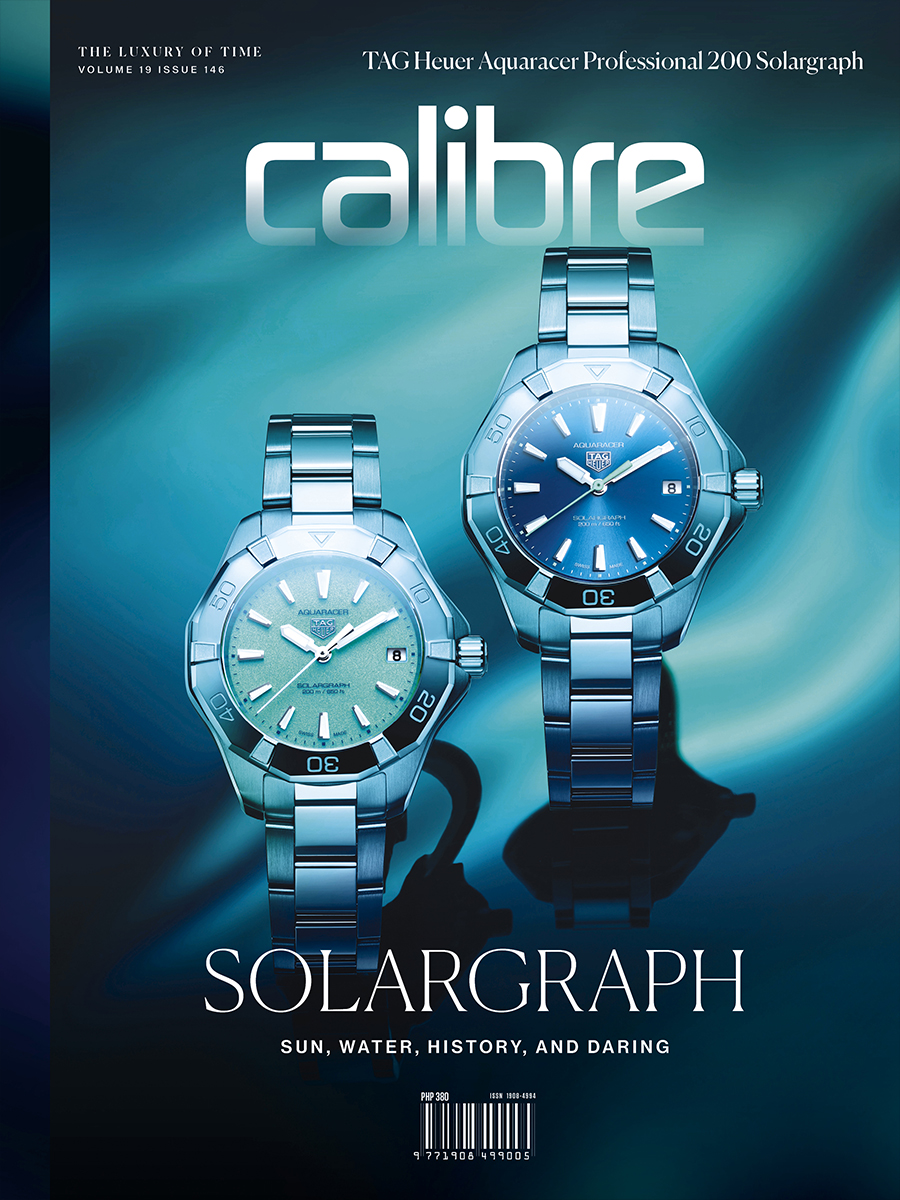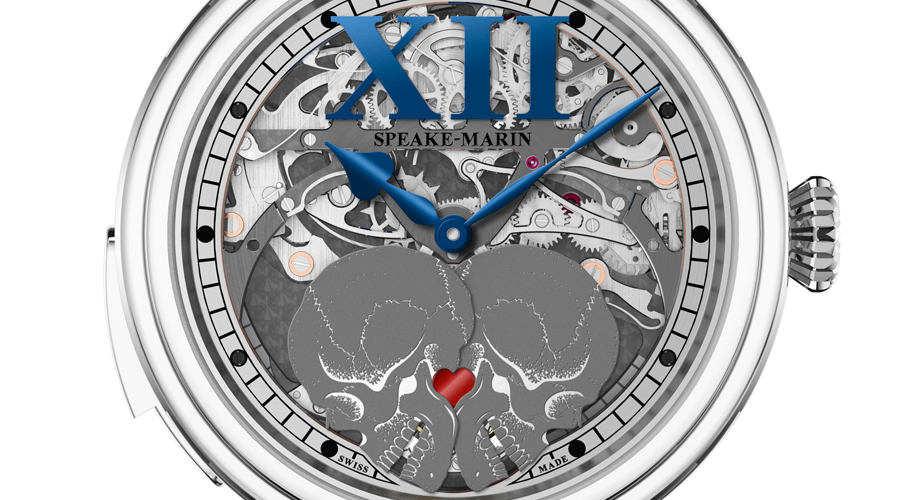The Speake-Marin tourbillon minute repeater Crazy Skulls is nothing if not rife with meaning. It is a poem for those who understand the language, and a song of joy even to the uninitiated. It rewards interpretation, but there is also a definite theme of love within it, and that speaks to all of us who have a heart.
Peter Speake-Marin’s wristwatches have always been a labor love for him, but they are the labor of someone thoroughly versed in the skills of his profession. In the Crazy Skulls, he uses his craft as the means to express his emotion, and uses mechanical complications to speak the language of love.
If that seems a little romantic, remember that all of the human race’s accomplishments are first rooted in being human, with all that entails. But an examination of the technical side of the Crazy Skulls is well deserved too, so let’s have at that first.
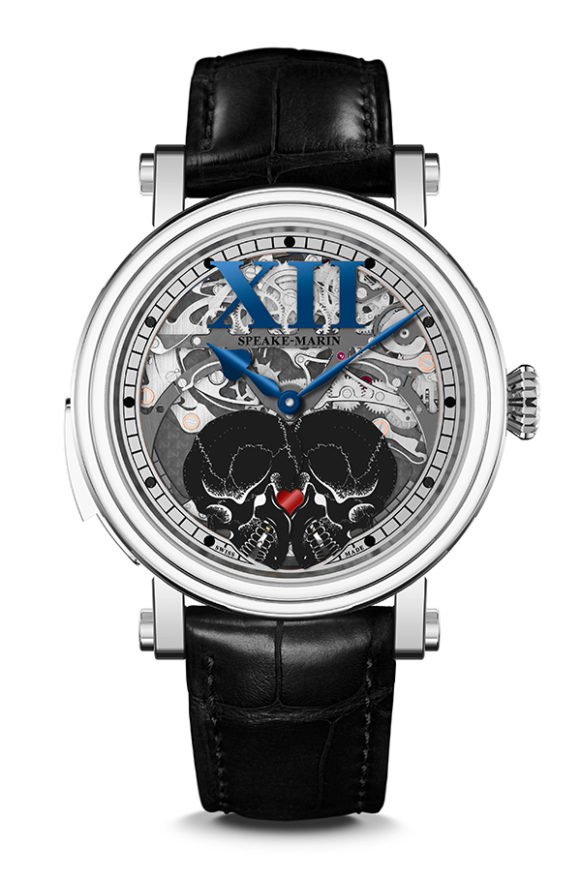
Crazy Skulls is the name for this twin offering: it is two unique pieces, functionally identical but slightly varying in color choices. It has central hours and minutes and a beautiful 60-second tourbillon to serve as the seconds hand. (The tourbillon carries the shape of the topping tool that Speake-Marin has adopted as the brand logo, and which has a particular personal significance for Peter Speake-Marin.) The watch is manually wound and has a minute repeater carillon.
The case is a Speake-Marin signature, a large Piccadilly shoulders and central case made out of titanium, with a bezel and case back of platinum. The case diameter is 42mm. Piccadilly cases are thicker than most, and Speake-Marin favors them, and always has. The watch is water-resistant to 30 meters and has a power reserve of 72 hours.
The dial is skeletonized. (Ha! Skull joke!) The blued-steel hands are done in Speake-Marin’s characteristic style, the hours hand spade-shaped and the minutes hand more an elongated slim-waisted spear.
Two skulls are prominently displayed on the lower arc of the dial. On one watch they are gray aluminum, on the other they are black aluminum. These skulls rest at the bottom of the dial, bracketing a red dot at the 6 o’clock position, and because of the framing of the skulls the dot looks like a heart. When the minute repeater is activated, these aluminum skulls slide up left and right, Simultaneously, the Roman numerals at 12 o’clock seem to collapse into a heap. When the carillon completes the chime, the skulls slide back together, the 12 reassembles itself, the heart joins the two skulls again, and all is as before.
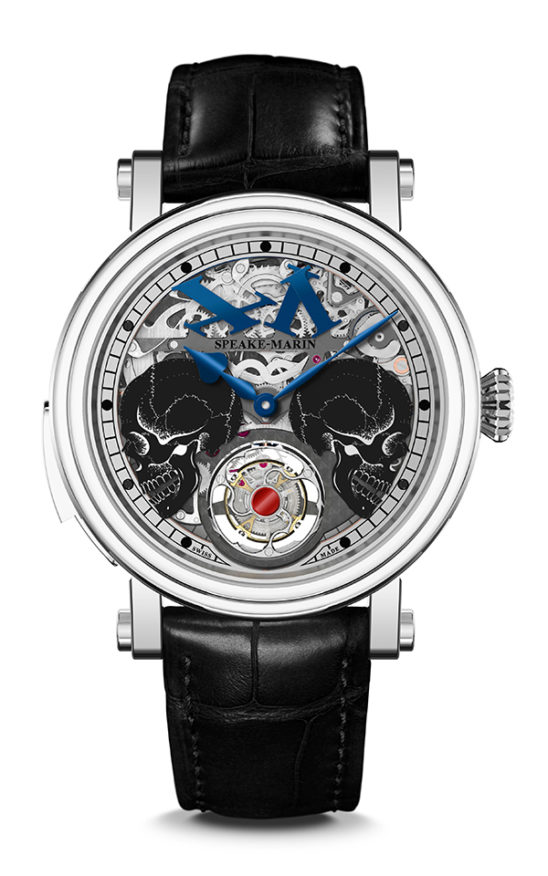
That is the technical aspect of this watch, and it is quite an achievement. The clockwork motion of the skulls as the chimes sound off is impressive; the collapse of the Roman numerals in the 12 catches you off guard. The activated minute repeater sounds great, and the gongs of the striking mechanism can be seen through the transparent crystal case back. It is yet another mechanical triumph for Speake-Marin.
But really, the great thing about this watch is the story that it tells, the juxtaposition of love, death, and the destruction of time. So let’s discuss the love story at the center of the Crazy Skulls, with at least a nod towards the symbolism involved.
Speake-Marin first put a skull on a watch a decade ago with the Cabinet des Mystères model. Skulls, as a symbol, are sort of like roses: they’re charged with so much meaning that they almost don’t have any. Or at least, they have too many to easily identify one in particular. Even used here in the Crazy Skulls, the skulls do more than one thing.
A particular thing that they DO accomplish here is this: The two skulls together form a heart. Actually, they form two hearts. The skulls together form the shape of a heart with their black (or grey) shapes, but they ALSO frame the red dot at the tourbillon’s center into a heart. The red heart doesn’t exist unless the two skulls frame it… and they can only do that when together.
“…he uses his craft as the means to express his emotion, and uses mechanical complications to speak the language of love.”
Taken in that sense, the meaning seems obvious: the skulls serve as the two individuals in a relationship. Just as there is no heart without the skulls, there is no love without the presence of the other person. When they are divided – when the music chimes and the skulls lift away from each other – then the heart disappears, vanished. Only in union is there unity. It’s also worth remembering that the Roman numerals in 12 fall apart when the skulls are pulled away from each other. When they are separated, time literally collapses.
But why skulls at all? Well, Peter Speake-Marin is said to be fascinated with the medieval tradition known as “Memento Mori.” This is a topic of long discussion and I am no expert. I can’t speak for Peter Speake-Marin (Ha! Name joke!) but there are some things we can at least try to summarize about the concept.
Memento Mori translates as “remember, you shall die one day.” The phrase is said to have its origins form Roman times: A conquering general would be given a parade known as a Triumph. But to keep all the praise from going to his head, a slave was positioned behind him, to keep reminding him that he was only mortal and would die one day. “Remember, thou art mortal.” Over and over. (Arguably, weirdest job ever. Also, possibly one with the shortest life expectancy attached.)
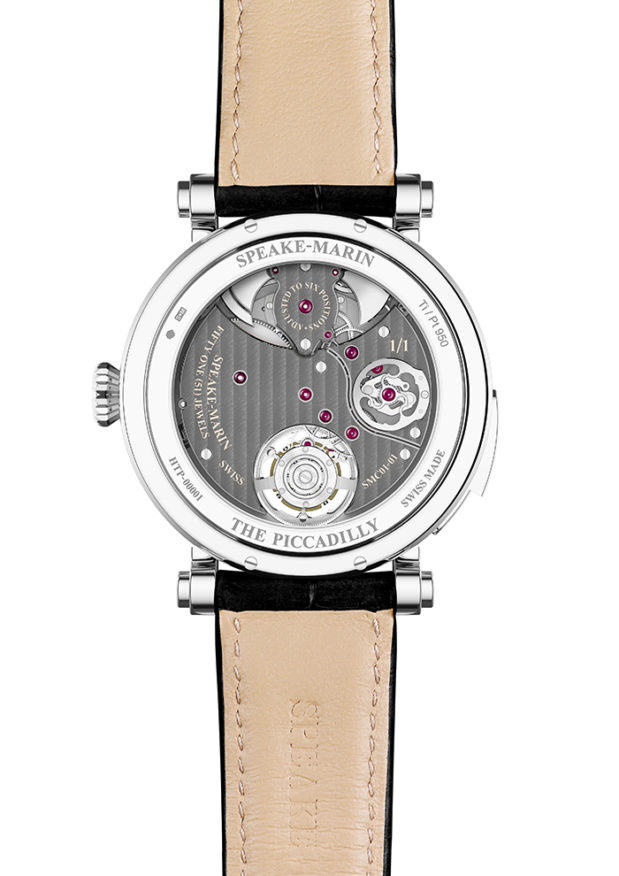
The Memento Mori tradition resurfaced in medieval times as a sort of theme in artwork: skulls would feature in paintings, used as a symbol of death, to remind the largely Christian population that all earthly pleasures pass away and that people should focus on doing good works to get into Heaven. Decorations on tombs with skeletal figures were also common, again a sort of reminder that these pleasures were transient. The intention was to get people to remember that mortal life, no matter how good it could feel, was fleeting, and that only the life hereafter was important.
These days, skulls still get used a lot as a decorative theme, but mostly in teenage clothing and rock music. It’s kind of a rebellious icon. The very idea of Memento Mori may have shifted for the modern mind. In fact, the idea of death and transient life has a sort of reverse effect on many modern people. When we are told that we will die someday, we tend to think of it as an exhortation to live our lives to the fullest. “No regrets” is more of the modern mantra, rather than focusing on the sweet hereafter. For many of us, the looming specter of death is a reminder to spend our time on Earth well, for it is finite, and to dust we shall return. It’s not exactly the message that medieval artists would have wanted us to get, but on the other hand, at least we don’t have slaves whispering in our ear saying, “Thou art not all that.”

